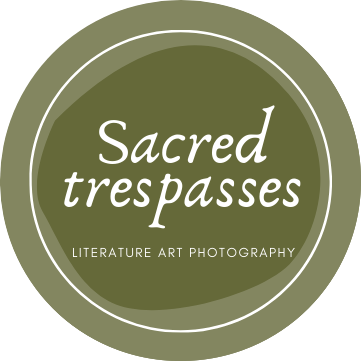“New Orleans is not in the grip of a neurosis of a denied past; it passes out memories generously like a great lord...” —Umberto Eco, Travels in Hyperreality
In October and November 2015, I traveled around Louisiana, spending most of my time in New Orleans and Plaquemines Parish—the area that Eudora Welty calls “south of South” in her marvelous short story “No Place for You, My Love.” Australian Book Review asked me to write about this trip. The January/February 2016 issue of that magazine features my “Letter from New Orleans” along with several photographs, including one on its cover.
This post of Sacred Trespasses offers a taste of that “Letter” and some more photographs from Louisiana, where every day offers lagniappe. That word—an amalgamation of languages meaning “something extra”—is “worth traveling to New Orleans to get,” Mark Twain writes in Life on the Mississippi. It also defines the temperament and generosity of the place.
—Kevin Rabalais
Street Crossing. Ursulines Avenue and Dauphine Street, French Quarter. November 13, 2015.
The streets of New Orleans double as scented gardens for the blind. Round any corner in the Vieux Carré—known to most as the French Quarter—and experience the assault of sensory details. It might start with a spicy tang of boiling seafood, crawfish, or shrimp or crabs plucked from the amphibious Louisiana land.
Derek Sosa, Tap Dancer. Bourbon Street, French Quarter. November 21, 2015.
Maybe it's frying beignets or praline mixture bubbling on stoves, or one of those fluorescent alcoholic drinks that bartenders pour inside goldfish bowls and sell to tourists from the Mid-west to sip as they stroll through the Quarter, convinced that they've reached the precipice between civilization and debauchery.
Autumn lights falls on City Park, New Orleans. November 20, 2015.
Then it comes. Somewhere in the middle of defining the precise scent, your ear tunes itself to the city's true heartbeat. First you might hear the trombone. Now the trumpet and tuba combine to release the city's musical gift to the world. In New Orleans, second-line jazz parades are more common than changes in the weather. ... Read more at Australian Book Review.
Jazz musicians follow wedding party, Royal Street, French Quarter. November 21, 2015.
Street performers, Bourbon Street, French Quarter. November 13, 2015.
Street performer, Bourbon Street, French Quarter. November 21, 2015.
Cast net shrimper, Venice, Louisiana. November 3, 2015.
Mardi Gras Indians leading a wedding party, Royal Street, French Quarter. November 21, 2015.










